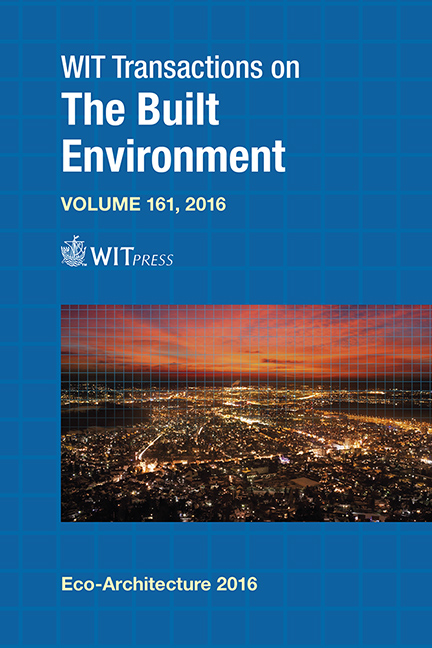Biomimicry For Ecologically Sustainable Design In Architecture: A Proposed Methodological Study
Price
Free (open access)
Transaction
Volume
161
Pages
13
Page Range
45 - 57
Published
2016
Paper DOI
10.2495/ARC160051
Copyright
WIT Press
Author(s)
D. A. Elmeligy
Abstract
Biomimicry is a new way of viewing and valuing nature based not only on what can be extracted from the natural world, but also on what can be learned from it. Therefore, architects, designers and engineers have returned to their natural and biological roots to investigate and seek out solutions in design and performance-based problems within architecture. So architects are interested in biomimicry not only to find new ways of building, but also to find new sources of inspiration for aesthetic expression. In many cases, the results are buildings that are highly efficient, more durable and require less energy or fewer materials by using their language with nature to perform the adapted design concept. Well-known ecodesign was an attempt to preserve the resources (i.e. renewable or non-renewable resources) and to find ecological solutions by emulating nature’s forms, processes and ecosystems to solve problems in architecture. Consequently, biomimicry is often described as a tool to increase the sustainability of human designed products, materials and the built environment.
So this research is focused on biomimicry as a potential approach that helps integrate ecological sustainability to design by understanding the natural processes to reach a proposed methodological study which contributes in clarifying the three-dimensional relationship between biomimicry, ecological design solution and sustainability which is most appropriate for architecture.
Keywords
biomimicry, ecological solutions, sustainable architecture, inspiration from nature





